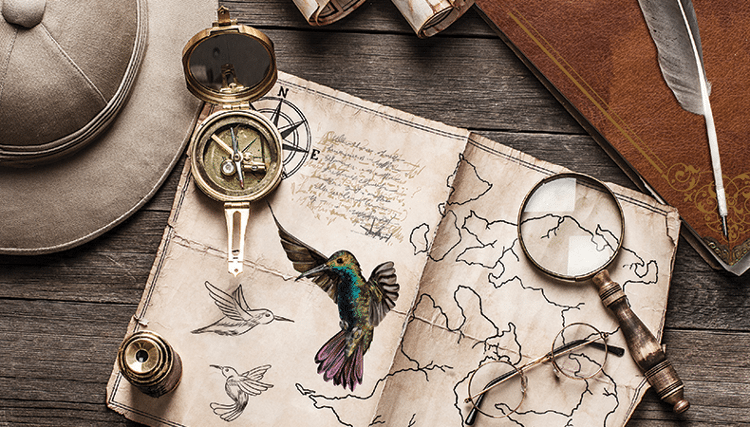Winning combination of 15 print techniques

How Digital Print Center created a perfect finish on a FESPA award-winning poster.
Club FESPA spoke to Seraj Ghazzal, General Manager of Qatar-based Digital Print Center, about the 15 processes used in its showcase ‘Diversity’ poster, each of which had to be perfect to create the finished product.
What was the reason behind the project?
The reason behind the project was to gain international recognition. Digital Print Center, part of the Dallah Group in Qatar, showcased its expertise to present a unique stand-out work to show its ability to compete with global skills and techniques.
What story is the Diversity poster trying to tell?
The poster shows that print is not just a static visual to look at but can be a real communication tool that can be touched, reflecting reality in a frame and harnessing accurate techniques through a creative, smart and communicative method.
Were there any particular challenges that you had to overcome relating to materials, design or execution?
Every project throws up many challenges, but overcoming them often generates new ideas and sometimes unexpected results. Our main challenge with this job was to overcome the material’s density when placing the digital spot lamination to avoid registration problems.
What were the different printing processes that were used, and on which elements of the poster?
The poster underwent 15 main stages:
- Offset CMYK printing (two runs) for the main visual
- Digital printing on digital velvet lamination material
- Silk screen printing for all the spot UV parts
- Gold foil
- Bronze foil (four operations)
- Black foil
- Purple foil
- Blue foil
- Green foil
- Wood spot digital lamination – cutting machine and manual operation (three operations)
- Peach skin spot digital lamination – cutting machine and manual operation (three operations)
- Leather spot digital lamination –cutting machine and manual operation
- Emboss (three operations)
- Deboss
- 3D emboss
What were the different printing processes that were used, and on which elements of the poster?
- The poster: offset printing on a two-colour machine; cocoon silk recycled; size: 100cmx70cm; 350gsm.
- The compass: bronze foil; gloss effect spot UV.
- The bird: bronze foil; blue foil; green foil; purple foil; black foil; 3D emboss.
- The magnifier: bronze foil; wooden digital spot lamination; gloss-effect spot UV; emboss.
- The book: leather digital spot lamination; bronze foil; sand-effect spot UV; deboss.
- The hat: peach skin digital lamination; emboss.
- The inkwell: bronze foil..
- The glasses: gold foil; gloss-effect spot UV.
- The feather: peach skin digital spot lamination; emboss.
- The wooden background: wooden digital spot lamination.
Where/how will the poster be used now?
The poster will be shared with all existing clients to give them more trust in our capabilities, creative thinking and production execution and will be presented to the potential clients to build a solid expectation that can generate a long-term business relationship.
How many people worked on the project, and how long did the project take?
A team of 12 was responsible for creating the concept, selecting the best materials, setting up the execution steps and establishing the best timeline. The team had the best expertise in the industry, which allowed them to establish the best plan after many brainstorming sessions to avoid any mistakes and to calculate most of the obstacles and risk factors that the project might face during the production process. The project timeline was two weeks of continuous trials and the final execution.
Do you think combining multiple printing processes on one product like this is widely applicable?
It is not necessarily widely applicable; however, this product showcases the possibilities of joining forces in one product. The concept behind the poster was to build more trust in the client’s mind-set that if we could combine all these processes in one product with such a creative and accurate method, using fewer processes will certainly be 100% accurate.
How do you see Digital Print Center’s business expanding in the next five to 10 years?
Digital Print Center ushered in a revolution in printing technology in Qatar. Over the years, we have expanded our raft of services to include a comprehensive array of imaging and printing solutions, along with marketing, event production support, exhibition stands and venue branding.
We aim to expand our business regionally, provide our clients with a global standard of creative work and to open new channels to reach global clients with local and regional operation.
To enter the 2019 FESPA Awards, click here.
Become a FESPA member to continue reading
To read more and access exclusive content on the Club FESPA portal, please contact your Local Association. If you are not a current member, please enquire here. If there is no FESPA Association in your country, you can join FESPA Direct. Once you become a FESPA member, you can gain access to the Club FESPA Portal.
Topics
Recent news

Regulation guidance: Corporate Sustainability Reporting Directive
The Corporate Sustainability Reporting Directive (CSRD) is now in effect, but with further changes on the horizon, what does it mean for printers? Sustainability consultant Rachel England outlines everything you need to know and talks to Apigraf about how your business may be affected.

Web-to-print design: Canva versus Kittl
We look at popular design packages Canva and Kittl to determine how they compare regarding graphic design and print on demand.

FESPA in South Africa: the print skills to thrive
Printing SA’s Career Day inspired young Cape Town learners to explore printing and packaging careers.

The rise of Chinese printers
Chinese printing companies are on the rise, and have their eyes set on the UK and EU marketplace. Some have made an instant impact; others are running into issues with maintenance and language barriers. What does the future hold for Chinese printing firms, and how can you navigate working with them?